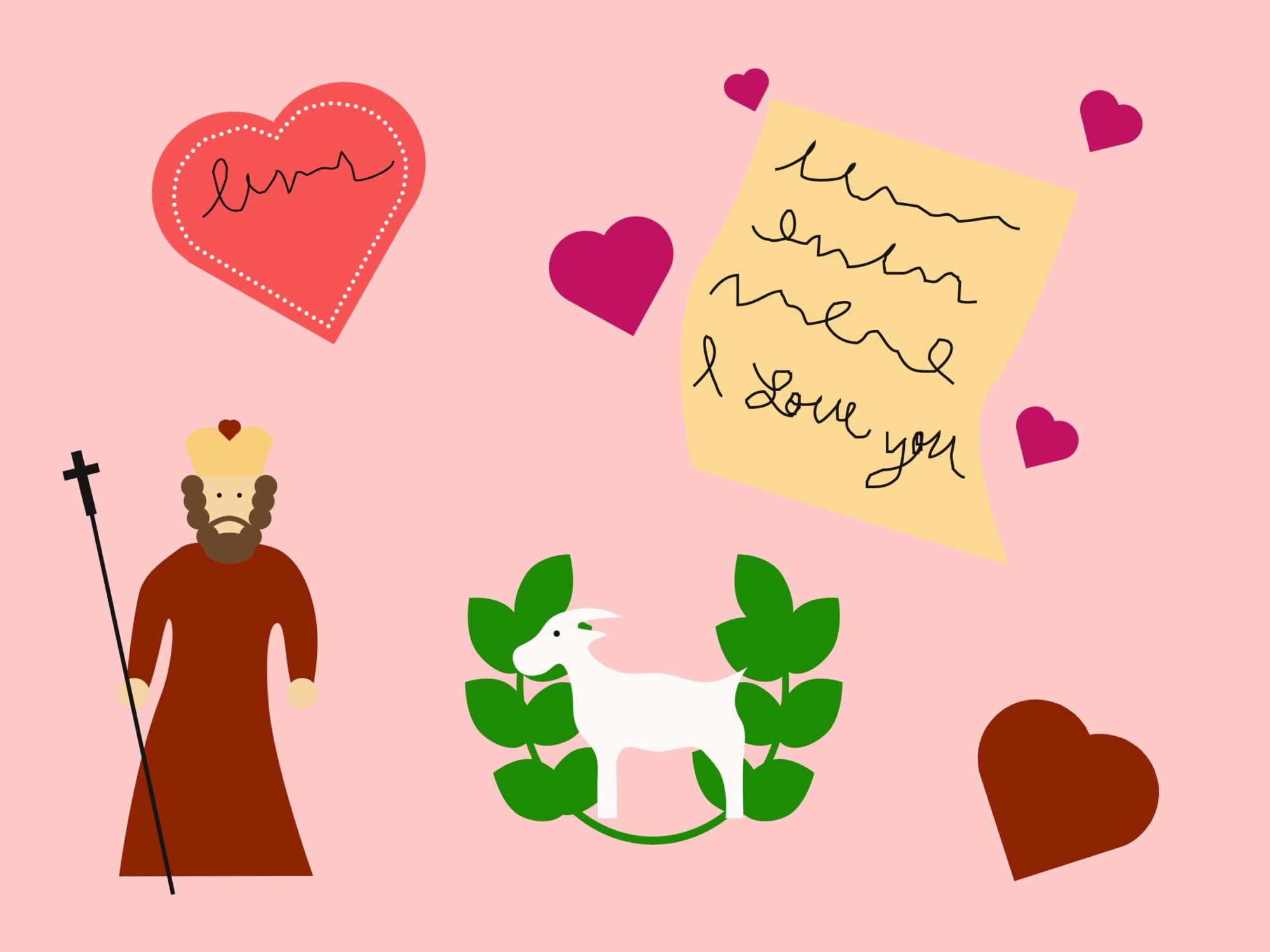
By McKenna Larson
Valentine’s Day was not always the Hallmark card and giant teddy bear holiday we know and love (or hate) today. The history of this holiday is bloodier than the rosy decorations would have us believe.
The namesake of Valentine’s Day is up for some debate among secular and Catholic scholars. There are three Catholic saints with names similar to Valentine, all of whom were martyred by the Roman Empire at different periods during the church’s early rise to power. Based on the most accepted story of St. Valentine, the mythical origins of the holiday begin in the Roman Empire during the 3rd Century CE under the rule of Emperor Claudius the Second who outlawed marriage to prevent young men from being distracted from wars being waged across the empire. Valentine, a Catholic priest, denied this ruling and continued to perform marriages before being put to death by Claudius when his work was discovered. This story would establish the early romantic aspect of the holiday, but we may never really know Valentine’s origins. The February date is said to be the anniversary of St. Valentine’s death, but it could also fall on an older pagan festival that was taken over by the Catholic Church in an attempt to destroy pagan religious practice.
Lupercalia was a Roman pagan festival to celebrate fertility in honor of gods of agriculture and the mythical founders of Rome, Romulus and Remus. Priests dedicated to the holy day would sacrifice goats to the agricultural god Faunus, often represented wearing goats hides. Dogs would also be sacrificed as an honor to Romulus and Remus who were raised by a wolf mother after being orphaned as infants. The hides of the sacrificed animals were dipped in the blood of the sacrifice and taken into town to provide the women with blessings of fertility. This practice was seen as unholy to the Catholic Church and was outlawed until being replaced in the 5th Century CE with the Feast of Saint Valentine on February 14th.
Beheaded saints and bloody goat carcasses are hardly the symbols of love that Valentine’s Day conjures up in the 21st Century, so how was the holiday transformed into one of love and romance? In the 14th century it was believed that the middle of February marked the beginning of mating season for some European bird species, but the holiday really became about human love thanks to famed poet Geoffrey Chaucer. Chaucer wrote the poem commemorating the story of Saint Valentine, title “Parliament of Foules” in 1375. Some historians have also credited William Shakespeare with popularizing the romantic ideals of Valentine’s still seen today, including giving your loved on a special poem to declare your love. The oldest suspected Valentine’s card, and possibly the most romantic, was sent in 1415 from the Duke of Orleans to his wife while he was imprisoned in the Tower of London. Since the 15th century Valentine’s cards have been popular but they were not mass produced until 1840 when Esther Howland began creating and selling cards in America. The 20th century brought about the commercialization of Valentine’s Day when companies like Hallmark successfully advertised cards and gifts that would become standard for couples.
While Valentine’s Day does still contain lingering elements of it’s Roman roots, such as the image of Cupid, god of romance and lust, much of the history has fallen away to time. But, next time your significant other gets you a Valentine’s dog plush you can think of the animal sacrifices that preceded it.

'A History of Valentine’s Day' has no comments
Be the first to comment this post!